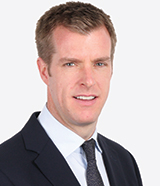How to monetize the central banks’ exit from quantitative easing – and the associated rise in interest rates – is the most important challenge facing investors today. It also marks the most fundamental shift in their operating environment for a very long time.
 |
| James McAlevey, Aviva Investors |
“Central banks have been so influential in the way that asset prices have behaved. For most of the past decade, that environment has been supportive of cheap index tracking with markets going up in a straight line: it has been difficult to improve on that outcome for investors,” admits James McAlevey, senior portfolio manager, fixed income at Aviva Investors in London. “As active managers, we think capital has been misallocated into short vol and smart beta strategies. We take the other side. We see the structural foundations changing in the US Treasury market and we might get some macro surprises. The single event most likely to be the catalyst is more aggressive interest hiking from the Fed. All strategies are reliant on a moderate Fed – what if that doesn’t happen?”
Volatility is what happens.
Deutsche Bank’s credit strategist Jim Reid observes of a recent meeting: “One client remarked that this was the first of such gatherings in a long time where nobody had really mentioned buying very historically cheap volatility. That, he thought, might be a sign that now might be the time.”
On July 20, however, the CBOE Volatility Index closed under 10 for a record sixth straight day in a row, falling 2.2% to 9.58.
Important components
McAlevey argues that volatility is coming and that it will be driven by foreign investors – in particular China – stepping back from the US treasury market as other investments start to offer better value.
This means that the domestic, more price-sensitive US investor will become a more important component of the buyer base.
“We like buying vol on interest rates,” he confirms. “We don’t like short-dated options, we like long-dated options. You can go and buy 10- or 20-year options that are very liquid and don’t cost a lot for the first two years.”
If volatility does return, active managers such as Aviva believe that weaknesses in some passive strategies could be exposed.
“I am not calling an end to smart beta,” says McAlevey. “But investors should not look at smart beta as a new paradigm, a new tool. There is a place for it, but investors shouldn’t look at it as the solution. These funds are wholly dependent on low volatility. If volatility increases, then their business model becomes challenged.”
Bruno Taillardat, head of smart beta at asset manager Amundi in Paris, concedes that some smart beta strategies are challenged by volatility.
“Minimum variance strategies have natural exposure to very low volatility stocks and are seen as a proxy for bonds,” he explains. “It is rational to be cautious about the impact of interest rates on minimum variance strategies. One solution is to build portfolios that look beyond volatility to integrate a wider spectrum of risks such as valuation and interest rate sensitivity. This is where active smart beta management makes sense. It is marginally more expensive but still cheaper than fundamental management.”
The question is whether or not this more diverse approach to smart beta, known as factor investing, will be enough to perform in a period of heightened volatility.
Felix Goltz, head of applied research at Edhec Risk Institute in Paris, says it depends on the factors.
“Even in multi-factor strategies, if they include one or several factors that are defensive, you can get interest-rate exposure,” he explains. “Quite often multi-factor strategies might have defensive characteristics and some might give you minimum variance-like performance. As an investor, you should be concerned about this and you should avoid such strategies if you do not want this bias. But you can control such biases within a multi-factor approach by allocating to the appropriate factors.”
More active
Another question is whether or not the return of volatility will play to the strengths of active management. Unsurprisingly, McAlevey thinks it will.
“The difference between what we do and what index tracking does has now passed its peak,” he argues. “Maybe in future, investors will think that paying 40 basis points a year for active management might be the right thing to do rather than five basis points for index funds.”
Amundi’s Taillardat argues, however, that appetite for smart beta will remain.
“Investors now ask for a better degree of analysis when they assess smart beta and factor investing strategies,” he tells Euromoney. “In the last three to four years, all strategies have enjoyed a very favourable environment. Now investors are focusing more on the hidden risks behind these strategies, but they still remain interested in them. There is still high uncertainty coming from equity markets and substantial appetite for defensive strategies.”
Edhec’s Goltz argues that the appetite for passive strategies will remain robust.
“The move to passive investment has nothing to do with low interest rates,” he declares. “It is driven by the disappointment of investors in active strategies. The promise of alpha has not been delivered. A rise in interest rates will be good for active managers that out-guess the market concerning this hike, but, on average, active managers won’t.”
